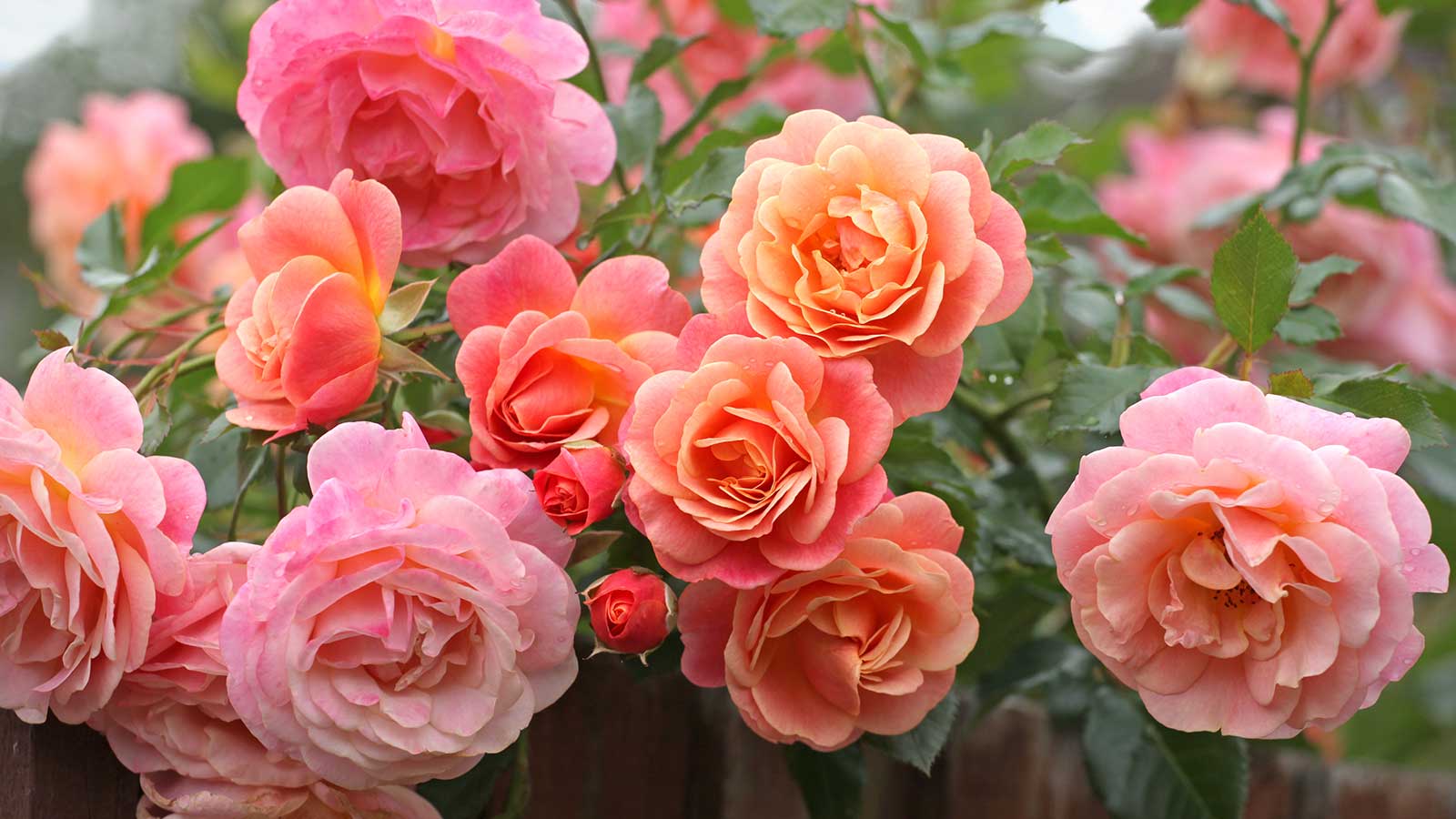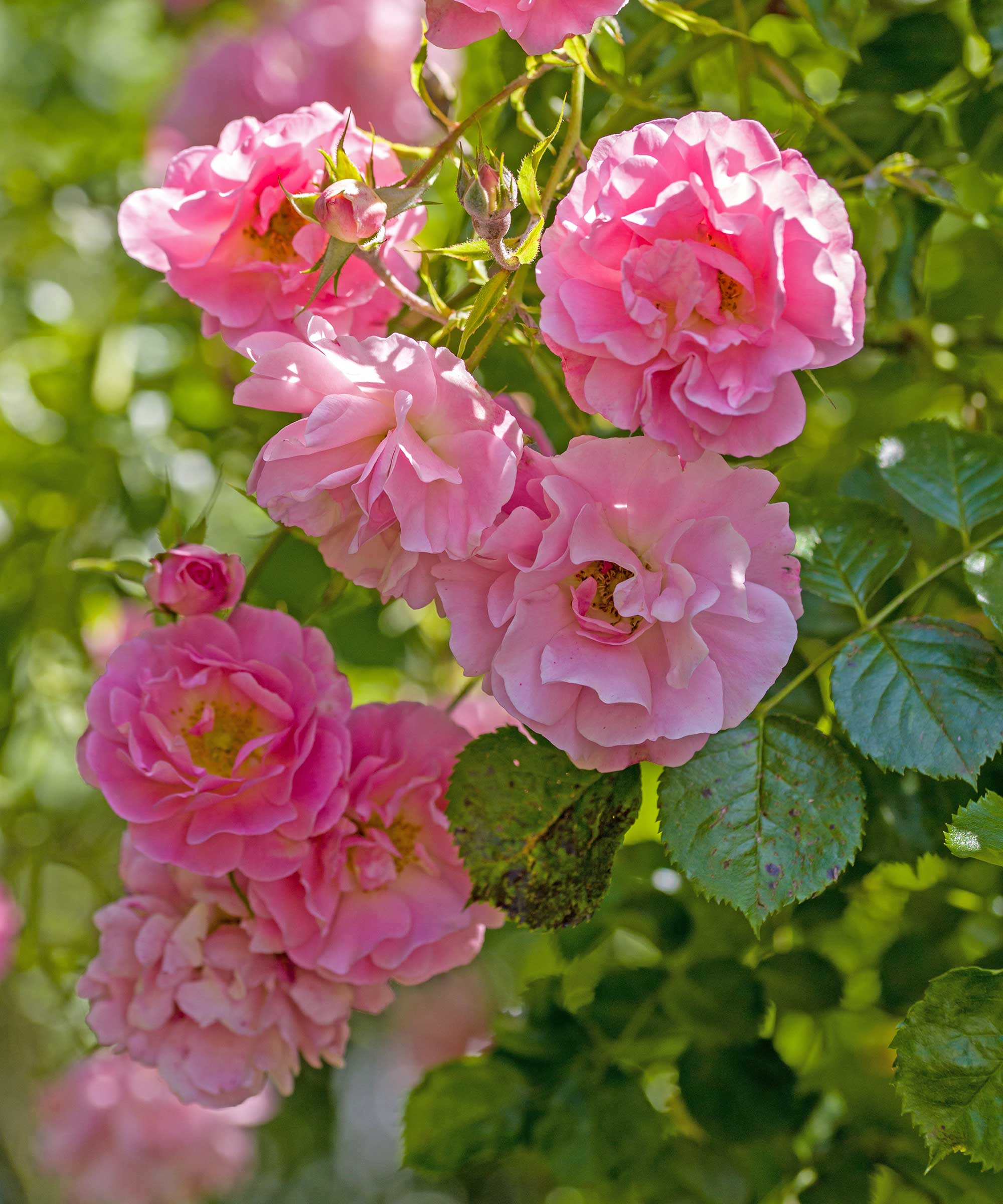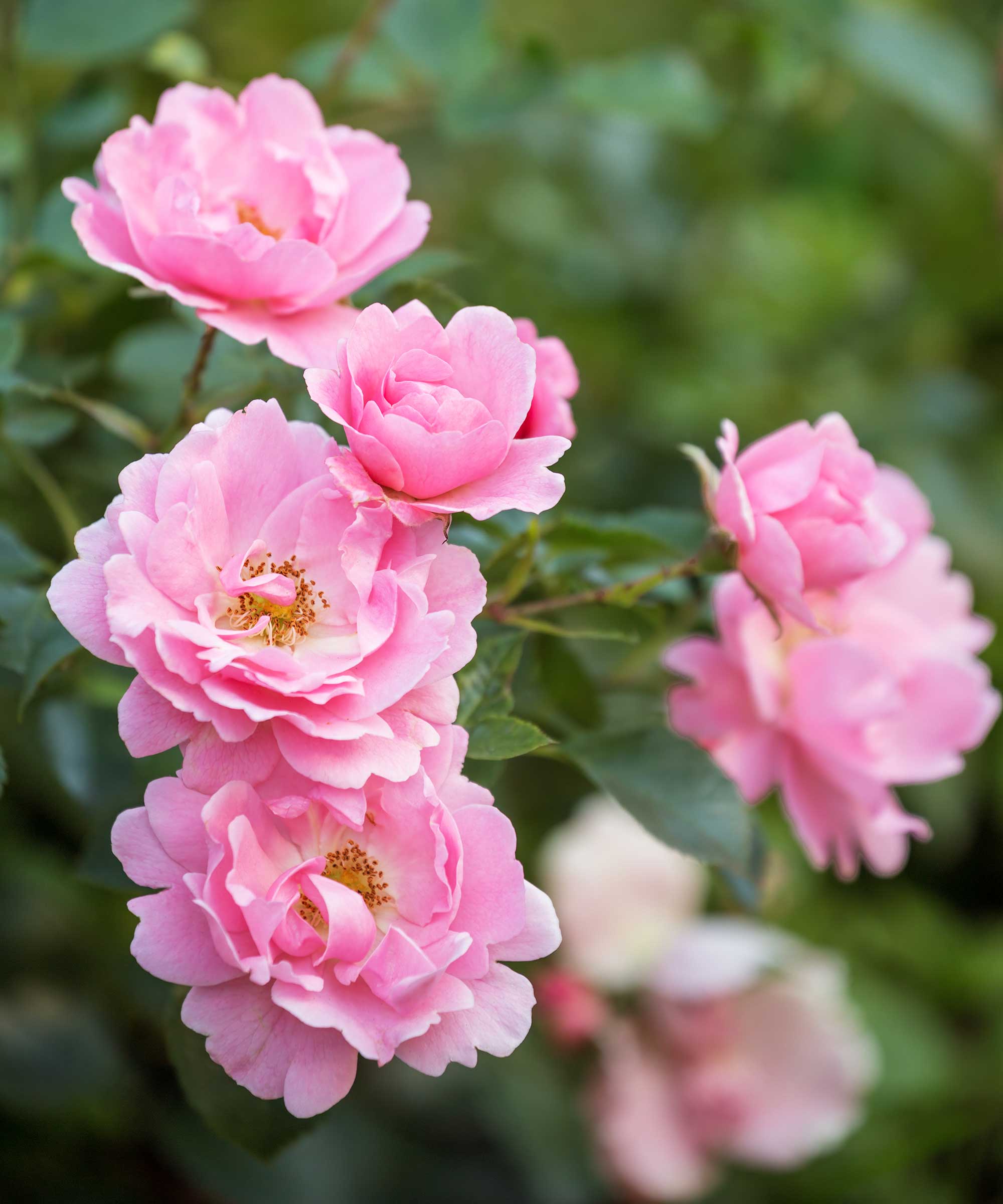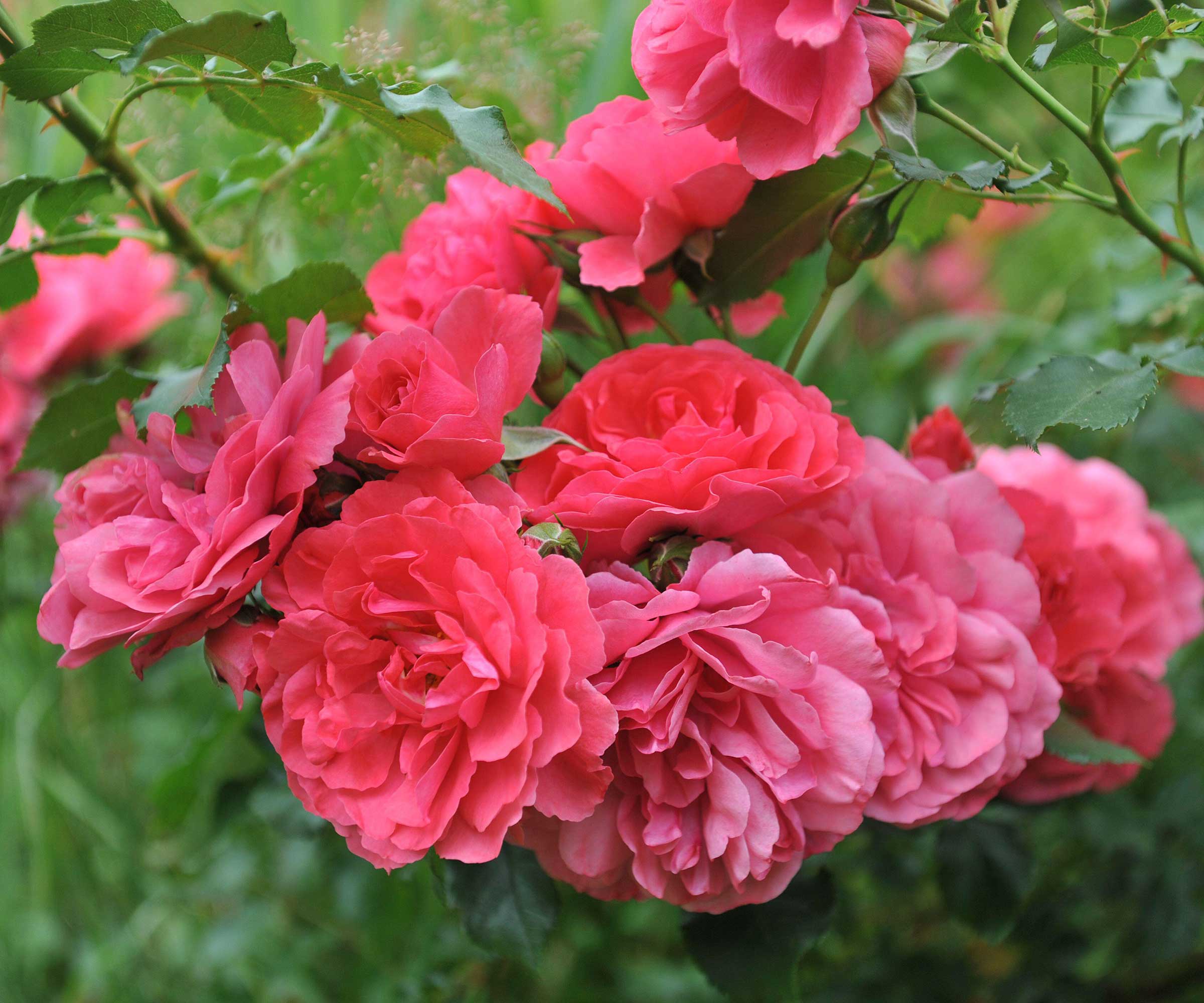
Everyone loves a rose, and you don't have to be a green-fingered expert to enjoy their beautiful blooms in your garden. Whether climbing, miniature, or something in between, there's a variety for everyone and every style of backyard. But before you get planting, there are some environmental factors that shouldn't be overlooked.
Finding the right planting spot is a key step for growing roses successfully, as looking after them will be so much easier if they're located somewhere suitable. Putting them in the wrong type of soil, in too little sunshine, or in too hot a climate can all cause problems, but such rose growing mistakes can be easily avoided with a bit of know-how.
Below, gardening professionals share their insights on where never to plant roses, to help you increase your chances of success. There is also advice on what to plant alongside them, and whether you can grow them indoors.
1. Shaded locations

Wes Harvell, rosarian at Jackson & Perkins, says to avoid planting roses in full shade or low-light areas. 'Roses need at least six hours of direct sunlight daily. Planting in shade leads to weak growth, fewer blooms, and higher susceptibility to disease due to poor air circulation and damp conditions.'
Tyler Francis of rose bush provider April & Ashley also comments on these plants' need for sunshine, and for this reason, he warns against planting them under trees. However, if your garden doesn't get lots of sun, don't worry. He says a little shade will be just fine – 'as long as the sun is hitting the rose during the morning and early afternoon hours.'
2. Poorly-draining soil

Wes also advises against planting roses in poorly drained or waterlogged soil, explaining that they hate 'wet feet'. 'Constantly soggy soil leads to root rot and fungal diseases,' he says. 'Always plant in well-drained soil, and avoid areas where water pools after rain.'
If your soil type is unsuitable, consider amending it by mixing in organic matter, such as homemade compost. This will give beneficial nutrients to your roses, too.
You could alternatively consider growing your roses in large pots, to help keep rose diseases at bay. If you decide on this, there are a few things to bear in mind. As Cecilia Keneally, a senior property care manager at Glengate, notes, 'While certain varieties can do well in pots, many classic garden roses have deep, vigorous roots.' Choose a suitable variety and a suitable planter – she warns that small or non-draining containers cause root stress, stunted growth, and winter dieback in cold climates.
3. Too close to larger plants

Planting roses too close to large trees or shrubs is also best avoided, and Wes highlights two reasons for this. First, the aggressive root systems of the neighboring plants will compete for nutrients and moisture. And second, the shade from tall plants will limit sunlight exposure, which, as mentioned above, can weaken your roses.
Instead, give your roses plenty of space, so they can soak up the sun and the goodness in the soil around them.
'For best results, plant your rose three feet (one meter) away from other plants and two feet (60cm) from other roses,' says Liam Beddall, senior rose consultant at David Austin Roses. Remember to keep on top of weeds, too, which can also hinder their growth.
4. Spots that get too hot

While sunshine is generally a good thing when growing roses, excessive heat is not. Wes warns against planting them on south-facing walls in hot climates, explaining that extreme reflected heat can scorch the leaves and dry out soil too quickly. 'In hot regions, choose a location with morning sun and afternoon shade instead,' he says.
Tyler also advises against planting roses in rock – 'the rocks heat up the root system and will kill it.'
If a heatwave catches you off guard, be sure to protect your plants from the sweltering temps by watering your roses regularly. You could also consider adding some temporary shade.
5. Outside their recommended hardiness zone

Speaking of temperature, it's always best to check that your planned rose variety (or any plant for that matter) is suitable for your hardiness zone, before you bring it home. 'Planting roses outside their ideal growing zone – either too cold or too hot – can lead to poor performance or plant death,' says Wes.
'In colder zones, roses may not survive winter without heavy protection,' he continues. 'In overly warm zones, some varieties may struggle with heat stress, shorter bloom cycles, or dormancy issues.'
Top tip: You can learn ways to winterize roses with our practical guide.
6. Windy sites

Avoid planting your rose in a very exposed spot. 'Strong winds can cause the base of the rose to loosen in the soil,' says Liam. 'This will result in your rose rocking in the wind which will lead to it growing at an angle, and in extreme cases could even kill it.
'If you find this problem with a rose you already have, make sure you firm the soil around it. In some cases, a stake may be necessary.'
Perfect for growing roses in containers this 'Myrtlewood Planter' by Gracia Oaks has a natural design that can complement any yard.
This organic bloom booster feed is perfect for getting the most out of your roses and other flowering shrubs.
Made of lightweight and durable polyethylene, this Pepinn resin pot planter is ideal for patios and terraces to grow roses or flowering and fragrant vines.
FAQs
Can you grow roses under cover?
Liam says they don’t recommend growing their roses indoors or in a greenhouse. 'They’re really at their best when planted outside in the garden, where they get plenty of fresh air, sunlight and space to grow naturally.
'Indoor and greenhouse environments can be too humid or lack the airflow roses need, which can lead to problems like disease or weak growth. For healthy plants and the most beautiful blooms, it’s best to let them enjoy the great outdoors.'
Top tip: Cecilia mentions that miniature rose varieties may temporarily survive in bright windows indoors – 'but pests (like spider mites) are a common problem.'
What are some good companion plants for roses?
While large and aggressive neighbors are a no-go, some beautiful plants make suitable rose companions.
Both Wes and Tyler recommend planting lavender. As Wes highlights, it repels pests like aphids, it attracts pollinators, and it also offers a beautiful fragrance contrast. Lavender plants also love sunshine and well-drained soil, notes Tyler – just like roses do. Tyler suggests perennial hibiscus, too, another plant that likes these conditions and 'adds a pop of color when roses take a break – so your garden stays vibrant all season.'
You could also consider nepeta, another suggestion from Wes. Like lavender, it can help deter harmful insects and tolerates similar growing conditions, plus it adds a soft, cascading effect at the base of rose beds, he points out. You can shop for a range of nepeta (also known as catmint) at Nature Hills; they're ideal for enhancing that cottage garden look.
Whether you're landscaping with roses in borders or are just growing a few in pots, the tips above should make it easier to keep them trouble-free. However, do be on the lookout for rose pests, too, such as aphids.
It's also crucial to know how to prune roses, and when – if you do this at the wrong time you might accidentally snip off flower buds before they've had a chance to bloom.







